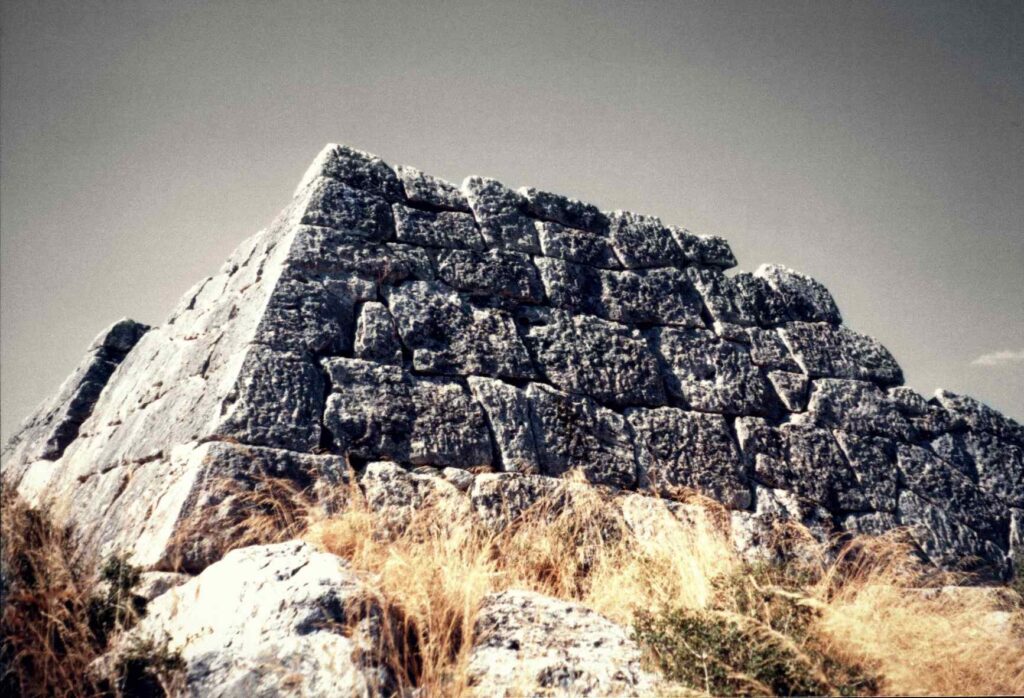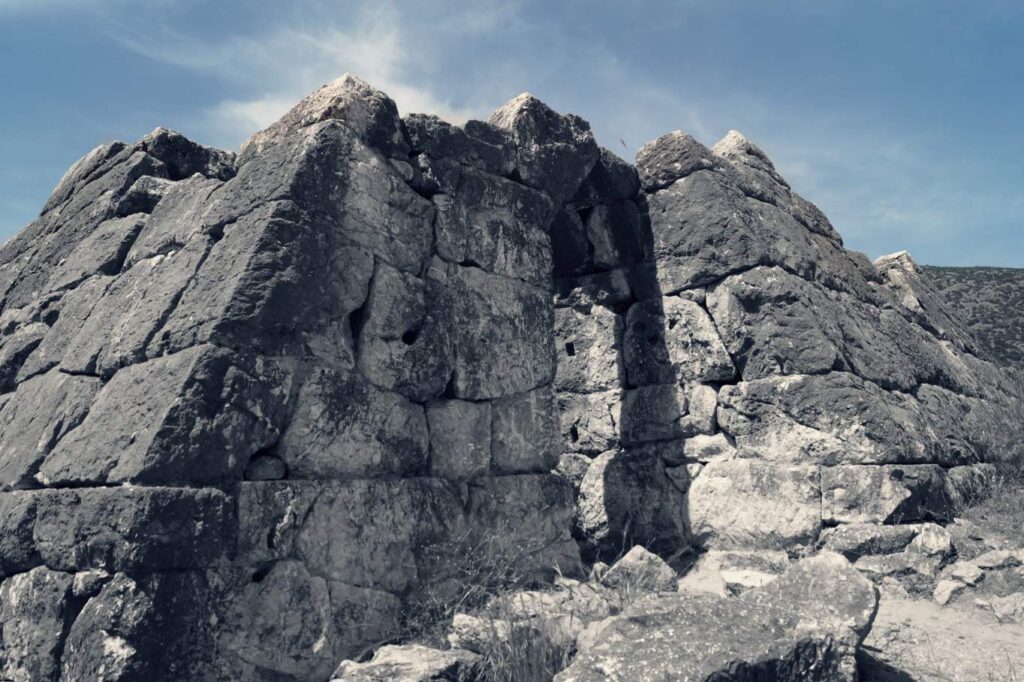While it’s fairly common to label the Egyptian pyramids the stuff of “ancient mysteries,” it’s something entirely new to discover similar structures all around the world. Such is the case with the Pyramids of Argolis, Greece, and their most famous structure, the Hellinikon Pyramid.
The Ancient Greek Pyramids

There are several ancient pyramid-like buildings in southern Greece, the most impressive of which is the structure near the village Hellinikon in Argolis (Eastern Peloponnese). Some of these buildings have suffered major and irreparable damages.
The following pyramids are mentioned in Greece (Lazos, 1995):
- Hellinikon in Hellinikon and Kephalari – It’s the best-preserved one.
- Ligourio in Epidaurus – Today, only its base exists.
- Dalamanara in Epidaurus – Only traces remain.
- Kambia, tower for fire-signaling, in Nea Epidaurus – It’s preserved to some height.
- Sikyon in Corinthia – Only traces remain.
- Viglafia in Neapoli (Laconia) – Only its base exists.
- Amfio near Thebes (Thiva) – Partly remains.
In addition to the above, two other singular structures have been referred to as pyramid-like buildings: the cone-like pyramid in Chania (Crete), and the Rock Pyramid forming the peak of Mt. Taygeto. However, the latter is just the natural peak of the mountain, the tallest in Peloponnese (2,407 metres).
Professor Ioannis Liritzis (1995 & 1997), assiduous researcher of such ancient megalithic structures, supports the view that there are over 20 ancient Greek pyramids; they refer to pyramid-like structures in Astros (in Kynouria, to the south of Argolis), in Neochori of Phthiotida (they even date it in 11,000 BC), in Agios Andreas of Mt. Parnassos, in Vathy (of Avlis, in northern Boeotia), and in other places.
The Pyramid Of Hellinikon

The true purpose of the Hellinikon remains unknown, although experts have theorized that a battle once took place at the site, and the structure was subsequently built as a monument to those who died.
The ancient Greek traveller and geographer Pausanias, in his Description of Greece, in the 2nd century AD, refers to the Pyramid of Hellinikon:
On the way from Argos to Epidauria there is on the right a building made very like a pyramid, and on it in relief are wrought shields of the Argive shape. Here took place a fight for the throne between Proetus and Acrisius; the contest, they say, ended in a draw, and a reconciliation resulted afterwards, as neither could gain a decisive victory. The story is that they and their hosts were armed with shields, which were first used in this battle. For those that fell on either side was built here a common tomb, as they were fellow citizens and kinsmen. Pausanias: 2.25
Although nothing has been found within the pyramid’s walls to provide evidence of an actual tomb.
The Intriguing Part Of The Hellinikon Pyramid
While the mystery of what’s inside the Hellenikon is certainly intriguing, what truly fascinates theorists is the fact that it was supposedly built in 2720 BCE ― making it significantly older than any of the Egyptian pyramids.
In 1938, an American archaeological expedition ascertained the construction of the pyramid at around 300-400 BCE; however, in 1991 the scientific team led by professor Liritzis, used a new method to calculate the age of the Pyramid and placed it around 3000 BCE. Later research performed by the Academy of Athens and the University of Edinburgh changed the date to 2720 BCE.
If those numbers are correct, then this pyramid is older than the pyramid of Zoser (Djoser) in Egypt, which is currently considered to be the oldest Egyptian pyramid ― even though the age of the Egyptian pyramids and sphinx is a controversial topic.
Conclusion
Despite the immense significance of this great discovery for our understanding of the beginning of civilizations, strangely the excavation of this ancient monument in Hellinikon has been abandoned, and its actual history is almost lost today.



